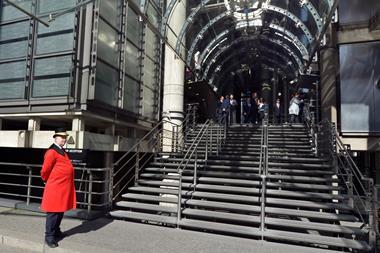Technology was always going to be part of Lloyd’s of London’s future, but the pandemic has accelerated its adoption. Will brokers going into Lloyd’s physically become a thing of the past and how will the ‘Future at Lloyd’s’ look post-Covid?
Insurance Times Reporter, Clare Ruel
With the underwriting room at Lloyd’s being shut during the height of the pandemic, brokers were forced to turn to the London Market’s electronic placing platform PPL as well as e-trading platform Whitespace – something that was not used so much previously because people were always physically present.
Although technology has always been pipped to play a part in Lloyd’s of London’s future, with its chief executive John Neal admitting in June last year that it risks becoming “irrelevant unless it grasps the tech revolution”, the pandemic has fast-tracked this trend, showing that risk can be placed successfully using technology.
Traditionally, the role of the broker is - of course - to be the agent of the insured.
Brokers’ primary function is to obtain an agreement between the insured and the insurer to place insurance cover that addresses the required risk appropriately.

However, with the pandemic seeing more and more risk placed on PPL and Whitespace due to social distancing and the lockdown measures enforced by the UK government, the broker’s role has arguably been transformed into more of a consultant, as technology has taken a bigger role in the market.
Technology, therefore, could free up time for brokers to focus on more complex risk and intricate tasks.
Going virtual
Lloyd’s has even opened a virtual underwriting room, combining remote and physical working.
Therefore, why would brokers bother reverting to the previous method post-pandemic? Especially when technology could potentially be cheaper in the long run.
Well, technology is not fool proof.
In the words of Bruce Carnegie-Brown, Lloyd’s chairman, “ a market built on sharing risk, collaboration and relationship building will always be important”.
This is why Lloyd’s has gone to great lengths to ensure that its building is Covid-safe, the underwriting room remains open and a workspace for employees is provided.
It is true that the Covid-19 pandemic has fast tracked the process of Lloyd’s of London becoming a “truly flexible workplace”, as well as giving technology a bigger part to play in the London Market.
But the broker’s role is built on making key relationships and no piece of technology can replace that.
Post-pandemic underwriting room
Here is a look at what Lloyd’s has done so far to ensure its underwriting room remains safe:
- Deep cleaning the entire underwriting room and shared spaces prior to occupation using a fogging technique every 30 days, which helps protect surfaces from contamination.
- High touch points will be cleaned regularly through the course of the day.
- It will not exceed 45% capacity on the underwriting room floors.
- Clear screens have been introduced on underwriting boxes to enable confidential conversations to safely continue.
- It has been operating two entrances and two exits to the building, queuing and one-way systems installed in a variety of locations.
- Escalators will be operational for normal use but lifts will be restricted to two passengers at a time.
- The provision of temperature-check thermal cameras for voluntary use.
Hosted by comedian and actor Tom Allen, 34 Gold, 23 Silver and 22 Bronze awards were handed out across an amazing 34 categories recognising brilliance and innovation right across the breadth of UK general insurance.





















































No comments yet